

ECGenie Clinic
The ECGenie Clinic is a rapid non-invasive solution for recording electrocardiograms (ECGs) from conscious laboratory animals. Applications include health monitoring, arrhythmia detection, and drug screening, especially with fragile transgenic and knockout animals, and even newborn mouse pups.

The ECGenie Clinic captures the heart’s electrical signals at 2 kHz to provide optimal fidelity in mapping the rapid ECG interval durations in mice (e.g., QRS interval duration of ~8 ms) and allows for real time monitoring of the signal. The typical lab animal setting easily accommodates this portable kit. Included are the disposable acquisition towers, bio-amplification unit, data acquisition and data analysis software The instrument is based on patented technology for non-invasively detecting cardiac electrical activity through the animals’ paws (United States Patent 6,445,941 and 10,959,399). The size and spacing of the conductive surface facilitates contact between the electrodes and the paws to provide a lead II ECG in laboratory animals. EzCG analyses software, provided by Mouse Specifics, analyses the signals to assess animal health, cardiac diseases, and drug toxicity.
An ECGenie Clinic system consists of:
- CorVita Aquisition Software
- EzCG Analysis Software to analyze conscious laboratory animals. Reports all standard ECG metrics, PQRST interval durations, and heart rate variability time and frequency domain metrics
- ECG Amplifier - A/D converter
- Acquisition tower
ECGenie Clinic features
- Compatible with awake mice, rats, and guinea pigs
- Non-invasive and suitable for conscious animals
- Disposable electrode towers for mice
- High-pass and low-pass filtering
- NO Anaesthetic • NO Implants • NO Surgery
EzCG Signal Analysis Software
This powerful ECG analysis software will analyse ECG signals collected in any species by any means, including recordings in mice measured via implanted transmitters, anesthetized rats during surgery, and awake newborn pups measured non-invasively with the ECGenie!
- Interpretation of ECGs from conscious moving mice, rats, and guinea pigs
- Published algorithms for heart rate and P Q R S T interval durations
- Custom inclusion of client-specific algorithms, including QTc
- HTML and text formatted output for multiple spreadsheet applications
Easy, rapid, published, & validated.
EzCG automatically determines all of the PQRST interval durations, including the rate-corrected QTc interval. Heart rate variability is reported not only in the time domain, but also in the frequency domain to give the HRV power spectrum for complete characterization of the high- and low-frequency components of beat-to beat variability. EzCG’s peak detection system rapidly discerns a fast beating mouse heart or a bradycardic pig, with a thresholding algorithm that gives the user flexibility in analysing an array of electrocardiographic signals. Individual or multiple peaks can be excluded while retaining the original data sets. Beat-by-beat and average values for the PQRST interval durations are reported graphically, and automatically written to any spreadsheet format. Complete analysis and comparison of ECG metrics between groups of animals are provided within minutes. Your own data sets and reference values are readily generated and accessible.
- Standard Parameters - RR, PR, QRS, ST, QT and QTc
- Frequency Domain Heart Rate Variability - Total Power, Low Frequency and High Frequency
- Time Domain - HRV (Heart Rate Variability), CV% (Coefficient of Variability), SDDN, RMSSD and pNN"50"
System Options
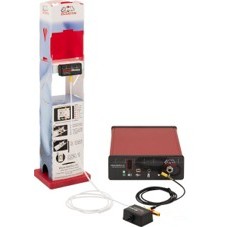 | MSI-ECG-MC - ECGenie Clinic System For Mice A complete setup for non-invasive recording electrocardiograms (ECGs) in awake mice. EC Genie Clinic for mice includes:
|
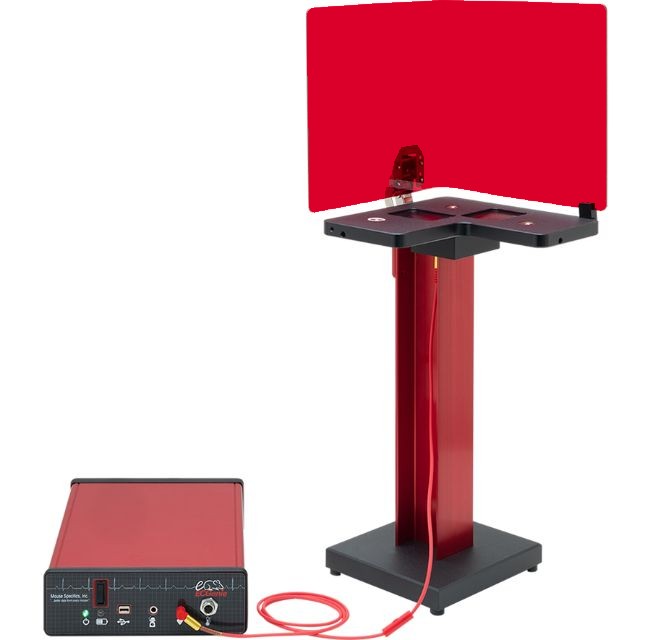 | MSI-ECG-RC - ECGenie Clinic System For Rats A complete setup for non-invasive recording electrocardiograms (ECGs) in awake rats. EC Genie Clinic for rats includes:
|
Videos
1- ECGenie Clinic - Hardware
2- ECGenie Clinic - CorVita Data Capture Software
3- ECGenie Clinic - EzCG Analysis Software
FAQs
1. How do data from the ECGenie compared to data collected via telemetry?
Presented at the American Heart Association was a study that compared ECG data recorded via the ECGenie “through the paws” technology to that obtained via telemetry. The data were the same. Both approaches record the equivalent of an Einthoven limb-lead. Whereas the telemetry requires the animals undergo surgery and recovery for implantation of the transmitters, the ECGenie enables recording from awake mice immediately, from day 1 of life.
2. Don’t the animals jump off of the ECGenie Clinic recording towers?
Not often. Sometimes during a demonstration or class, where there are many onlookers and a noisy environment. But it is not usual in a quiet room with a single operator managing the recording of the ECG signals to have any mice jump off of the ECGenie Clinic.
3. How is the ECG signal quality?
All of the ECG signal morphology can be identified and all of the PQRST interval durations determined. Physiological signals can be confounded by extraneous noise, and the ECGenie Clinic includes noise-reducing technology to maximize the signal and minimize the noise.
4. Are there any size limitations with the ECGenie Clinic?
The software includes the generation of the ensemble averaged signal that depicts the ECG morphology, from which it is clear that the P Q R S and T are identifiable…non-invasively…via the subject’s paws. The ECGenie can record the electrocardiogram in newborn mice and rats from day 1 of life through old age, including rats sized ~600 grams.
MSI-ECG-MC
ECGenie Clinic System With Mouse Acquisition System
A complete setup for non-invasive recording electrocardiograms (ECGs) in awake mice. EC Genie Clinic for mice includes:
- CorVita Acquisition Software - Latest Version
- EzCG Analysis Software Package - Proprietary software to analyze ECGs from conscious laboratory animals. Reports all standard ECG metrics, PQRST interval durations, and heart rate variability time and frequency domain metrics. System Includes: Single-user license, security dongle, and technical support
- ECG Amplifier A/D converter
- Starter pack of 2 disposable mouse acquisition towers
- Tower base, Genie Switch, and Genie Relay
MSI-ECG-RC
ECGenie Clinic System With Rat Acquisition System
A complete setup for non-invasive recording electrocardiograms (ECGs) in awake rats. EC Genie Clinic for rats includes:
- CorVita Acquisition Software - Latest Version
- EzCG Analysis Software Package - Proprietary software to analyze ECGs from conscious laboratory animals. Reports all standard ECG metrics, PQRST interval durations, and heart rate variability time and frequency domain metrics. System Includes: Single-user license, security dongle, and technical support
- ECG Amplifier A/D converter
- Rat acquisition tower with red acrylic housing
- Starter pack of 3 MSI-009 multi-use disposable lead plates for rats (average use is 4-6 ECG measurements per lead plate)
MSI-ECG-AM
Mice Acquisition Hardware For Use With ECGenie Clinic For Rats
- GenieRelay and GenieSwitch to allow customers use of Mouse Recording Tower (MSI-101)
- Allows customer with ECGenie Clinic for rats to be compatible with acquiring ECGs noninvasively in conscious mice (requires purchase of MSI-101)
MSI-009
ECGenie Lead Plate Electrodes for Rats 15/bx
- For use ECGenie Clinic for rats aquisition system
- Each lead plate electrode can be re-used around 5 times, depending on animal behaviour and your protocol
- Approximately 18 month shelf life
MSI-101
Mouse Recording Tower For ECGenie Clinic 10/pk
- Towers connect with integrated electrodes to your ECGenie Clinic to enable you to non-invasively record the ECG in awake mice
- Each recording tower can be re-used around 6-10 times, depending on animal behaviour and your protocol
- Towers come flat packed and need to folded upright prior to use
- Image shows Mouse Recording Tower and Tower Base (not included)
MSI-ECG-AR
Rat Acquisition Platform For Use With ECGenie Clinic For Mice
- Plug in acquisition module for acquiring ECGs noninvasively in conscious rats
- Allows customer with ECGenie Clinic for mice to be compatible with acquiring ECGs noninvasively in conscious rats
MSI-001A
ECGenie Lead Plate Electrodes (Heart Shaped) for Mice 24/bx
- Compatible with legacy ECGenie
- Each lead plate electrode can be re-used around 5 times, depending on animal behaviour and your protocol
- Approximately 18 month shelf life

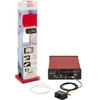


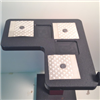
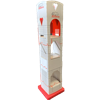
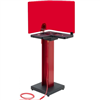

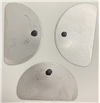


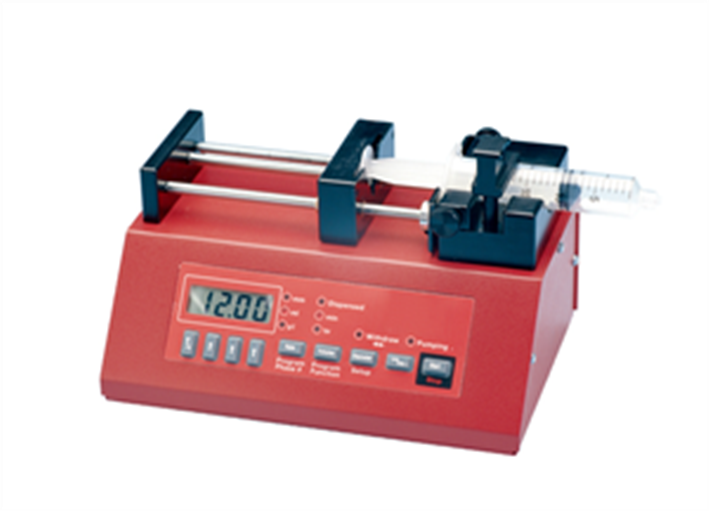
Request
Catalogue
Chat
Print